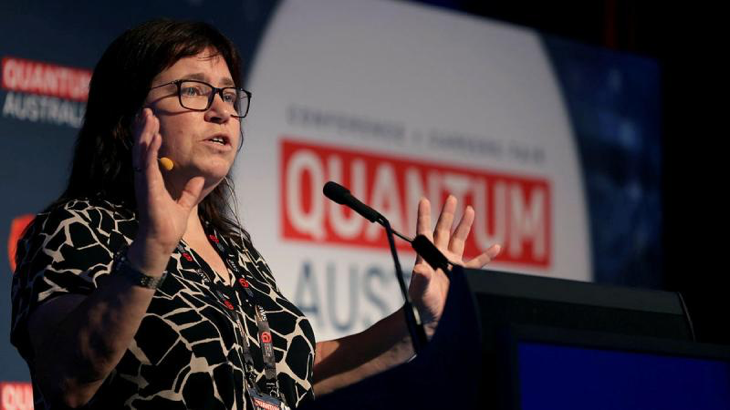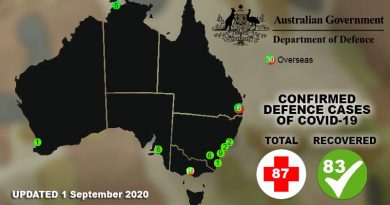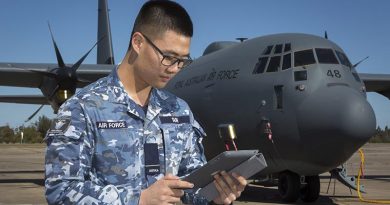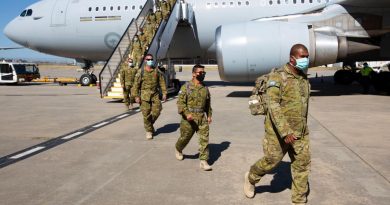Making the tiniest things count in war

Harnessing quantum behaviours to develop advanced technologies could enable Defence to provide the warfighter with an asymmetric advantage.
CAPTION: Head of the Advanced Strategic Capabilities Accelerator Professor Emily Hilder addresses the Quantum Australia 2024 Conference in Sydney. Story by Natalie Staples.
This was one of the key insights Defence experts provided to the Quantum Australia Conference in Sydney in late February.
The quantum revolution is allowing computers to calculate, model and manage data in ways that are impossible for classical computers, and quantum sensing technologies are enabling researchers to detect things previously hidden at the tiniest of scales.
Head of the Advanced Strategic Capabilities Accelerator (ASCA) Professor Emily Hilder told the conference quantum mechanics – a physics discipline that describes the behaviour of matter and light on the atomic and subatomic scale – was already being used to seek an advantage for the warfighter.
She said Australian scientists, as well as Five Eyes partners, had tested novel quantum technology-based timing prototypes on a Royal New Zealand Navy ship as part of the Rim of the Pacific Exercise in 2022.
The Australian prototypes performed better than the commercial benchmark at short-to-medium time scales, especially in terms of mechanical stability.
Solutions such as this were being developed to provide secure communication, networking and time transfer in a contested environment where GPS is degraded or denied. These could be applied to a wide range of platforms, from land vehicles and uncrewed aerial systems, to underwater systems and surface vessels.
Professor Hilder said ASCA would partner with universities and industry to investigate technologies that provide leap-ahead improvements to Defence capabilities.
“ASCA’s Emerging and Disruptive Technologies [EDT] program focuses on shaping and future-proofing the defence innovation ecosystem,” she said.
“We aren’t just thinking about what we need to do today. We are looking at the capability after next and thinking about how we can both create strategic surprise and avoid being surprised.
“Our initial EDT call-out to industry and academia included eight opportunity statements related to quantum technologies. The call-out closed in early February and we received 179 submissions, which we are evaluating.”
Workforce themes also resonated through the conference.
Dr Pina Dall’Armi-Stoks, Research Leader Electro Optics Sensing and Electromagnetic Warfare, said there was no need to have a quantum PhD to work in the field.
“We are now seeing technologies transition from the lab and prototypes being built. So engineers with technical know-how are needed, along with mathematicians and people with business skills,” Dr Dall’Armi-Stoks said.
“My advice to others considering a quantum career is to be open-minded, flexible and willing to go out of your comfort zone. Also be prepared to work with others with a diverse skill set.”
Australia has recognised the importance of quantum, with a National Quantum Strategy. It is also one of the Government’s six Defence Innovation Science and Technology priorities, following the release of the Defence Strategic Review, and is one of the AUKUS Pillar II Advanced Capabilities focus areas.
.
.

.
.





